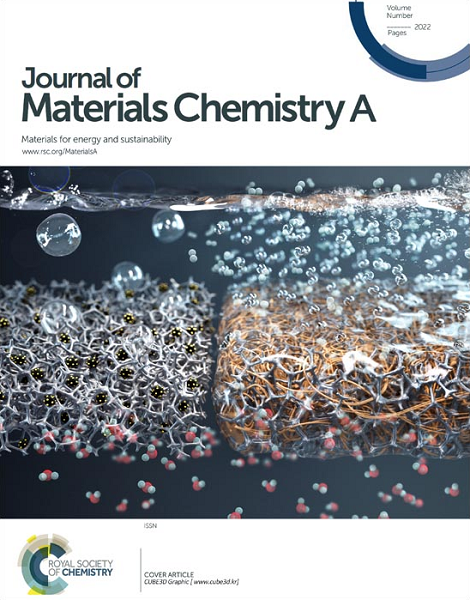Electrochemical glucose-to-formic acid conversion coupled with alkaline hydrogen production over nanostructured CuCo2O4 catalysts
IF 10.7
2区 材料科学
Q1 CHEMISTRY, PHYSICAL
引用次数: 0
Abstract
Coupling the hydrogen evolution reaction (HER) with the electrochemical oxidation of glucose (GOR), which is one of the most abundant biomass-based platform molecules, could be a promising approach to reduce energy consumption of hydrogen production and meanwhile produce the value-added chemicals powered by renewable energy. However, GOR remains difficult to develop an efficient electrocatalyst with high-activity and low-cost. Herein, we introduce a serious of earth-abundant elements into Co3O4 spinel nanostructure as electrocatalysts for GOR. The optimized CuCo2O4 spinel oxide nanoneedle exhibits excellent GOR electrocatalytic activity, which only requires 1.31/1.40 V vs reversible hydrogen electrode (RHE) to achieve the high current densities of 200/500 mA cm−2 and obtains a high 98% faraday efficiency of formate at 1.40 V vs RHE. The high performance is attributed to the abundant oxygen vacancies and transient formation of CoOOH active species on the surface of CuCo2O4 and rapid consumption by the spontaneous chemical reaction with glucose, which are evidenced by in-situ Raman spectroscopic measurements and electrochemical tests. The two-electrode electrolytic cell voltage of GOR coupled with HER is about 370 mV lower than that of the overall water electrolysis at 200 mA cm-2.求助全文
约1分钟内获得全文
求助全文
来源期刊

Journal of Materials Chemistry A
CHEMISTRY, PHYSICAL-ENERGY & FUELS
CiteScore
19.50
自引率
5.00%
发文量
1892
审稿时长
1.5 months
期刊介绍:
The Journal of Materials Chemistry A, B & C covers a wide range of high-quality studies in the field of materials chemistry, with each section focusing on specific applications of the materials studied. Journal of Materials Chemistry A emphasizes applications in energy and sustainability, including topics such as artificial photosynthesis, batteries, and fuel cells. Journal of Materials Chemistry B focuses on applications in biology and medicine, while Journal of Materials Chemistry C covers applications in optical, magnetic, and electronic devices. Example topic areas within the scope of Journal of Materials Chemistry A include catalysis, green/sustainable materials, sensors, and water treatment, among others.
 求助内容:
求助内容: 应助结果提醒方式:
应助结果提醒方式:


